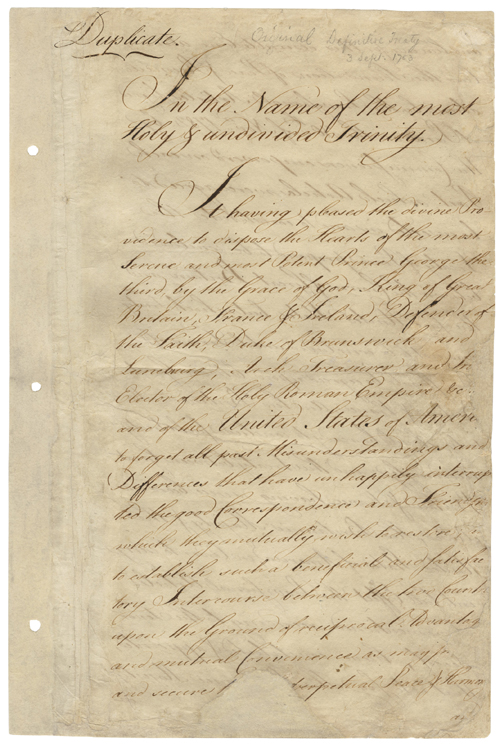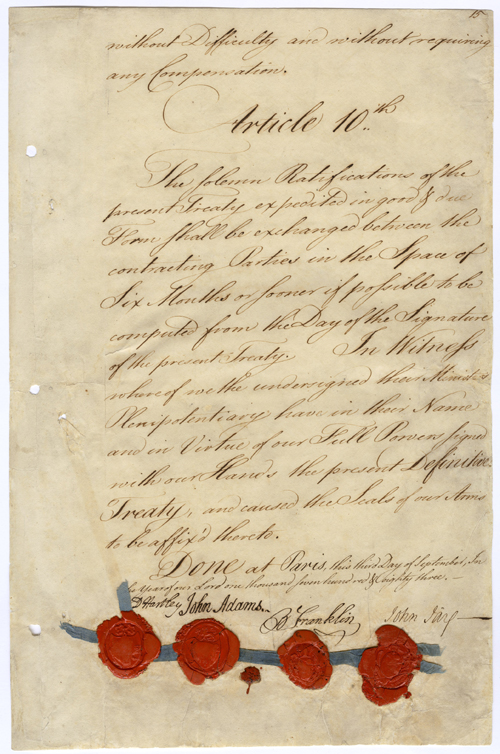Contrary to popular belief, the Battle of Yorktown was not the end of the war; there were still British forces scattered across the Colonies. This included a large force occupying New York commanded by General Clinton. Washington began by driving the remaining British out of the southern colonies. He then moved north to reclaim New York, but was unable to find an effective way to do so. In May of 1782, circumstances improved, as Clinton was replaced by Sir Guy Carleton, a less experienced commander. Britain also stopped sending soldiers to fight wars elsewhere. At this point, diplomacy was the best option.
In 1779, John Adams was appointed to negotiate American independence, having little success. After the victory at Yorktown, negotiations were reopened. Adams was now joined by Benjamin Franklin, John Jay, and a few others. By fall 1782, the British were losing interest in America because they were focusing on other countries. Near the end of 1782, they began drafting a treaty to recognize the colonies as a new country. It was later named "The Treaty of Paris" and was officially signed in Paris on September 3, 1783. All British forces were pulled from New York by the end of November, and the war finally came to a close two years after Yorktown.
The Treaty of Paris, 1783 (Credit: National Archives)

